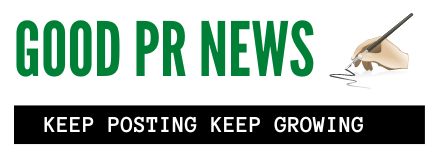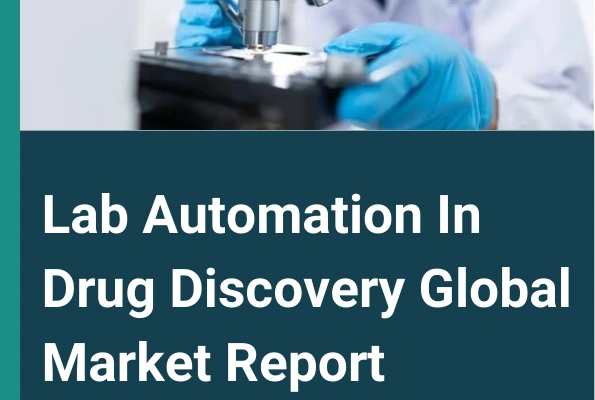Market Size –
The lab automation in drug discovery market size has grown strongly in recent years. It will grow from $6.13 billion in 2023 to $6.47 billion in 2024 at a compound annual growth rate (CAGR) of 5.6%. The growth in the historic period can be attributed to the increasing complexity of drug discovery, demand for efficiency and cost reduction, growing need for high-throughput screening, rising labor costs, and pressure to accelerate drug development timelines.
The lab automation in drug discovery market size is expected to see strong growth in the next few years. It will grow to $7.96 billion in 2028 at a compound annual growth rate (CAGR) of 5.3%. The growth in the forecast period can be attributed to expanding drug pipelines of pharmaceutical companies, rise in personalized medicine and precision therapeutics, increasing focus on rare diseases and orphan drugs, demand for remote and decentralized clinical trials, the emergence of microfluidics and lab-on-a-chip technologies. Major trends in the forecast period include proliferation of modular and customizable automation solutions, adoption of cloud-based platforms for data management and collaboration, growth of automation in emerging markets, rise of virtual drug discovery companies leveraging automation and digital technologies, development of standardized protocols and interoperable systems.
Order your report now for swift delivery @
https://www.thebusinessresearchcompany.com/report/lab-automation-in-drug-discovery-global-market-report
Scope Of Lab Automation In Drug Discovery Market
The Business Research Company’s reports encompass a wide range of information, including:
1. Market Size (Historic and Forecast): Analysis of the market’s historical performance and projections for future growth.
2. Drivers: Examination of the key factors propelling market growth.
3. Trends: Identification of emerging trends and patterns shaping the market landscape.
4. Key Segments: Breakdown of the market into its primary segments and their respective performance.
5. Focus Regions and Geographies: Insight into the most critical regions and geographical areas influencing the market.
6. Macro Economic Factors: Assessment of broader economic elements impacting the market.
Lab Automation In Drug Discovery Market Overview
Market Drivers –
The increasing demand for precision medicine is expected to propel the growth of lab automation in the drug discovery market going forward. Precision medicine, also known as personalized medicine, is an approach to medical treatment and prevention that takes into account individual variability in genes, environment, and lifestyle for each person. Lab automation accelerates research, improves experimental repeatability, and improves the efficiency of precision medicine and drug discovery procedures, ultimately leading to the creation of more effective medicines and diagnostics suited to individual patients. For instance, in October 2022, according to the Personalized Medicine Coalition (PMC), a US-based organization that promotes understanding and adoption of personalized medicine, more than 75,000 genetic testing products and 300 personalized medicines will be on the market for people with multiple types of cancer, genetic rare diseases, and a range of chronic and infectious diseases. Therefore, the increasing demand for precision medicine is driving the growth of lab automation in the drug discovery market.
Market Trends –
Major companies operating in lab automation in the drug discovery market are increasing their focus on developing advanced solutions, such as rapid idea-to-data solutions, to gain a competitive edge in the market. A rapid idea-to-data solution refers to a streamlined process or platform that allows individuals or organizations to quickly transform their ideas or concepts into actionable insights or data-driven results. For instance, in April 2022, Strateos Inc., a US-based biotechnology company, launched a rapid idea-to-data solution for small molecule discovery on its cloud lab automation-as-a-service platform. It is a lab automation tool specifically designed for small-molecule discovery in drug development. The on-demand, scalable Strateos Cloud Lab Automation-as-a-Service Platform includes linked robotic automation with 23 workcells and hundreds of instruments. The platform facilitates early lead generation through lead optimization choreographed by a software architecture that allows users to design compounds of interest in the cloud and have them automatically assembled and tested using a variety of methods such as cell-based, biochemical, and structured-activity relationship (SAR) assessments.
The lab automation in drug discovery market covered in this report is segmented –
1) By Type: Automated Liquid Handlers, Automated Plate Handlers, Robotic Arms, Automated Storage And Retrieval Systems, Other Types
2) By Component: Instruments, Software, Services
3) By Application: High-Throughput Screening, Compound Management, Sample Preparation, Other Applications
4) By End-User: Biotechnology And Pharmaceutical Industries, Research Institutes, Other End-Users
Get an inside scoop of the lab automation in drug discovery market, Request now for Sample Report @
https://www.thebusinessresearchcompany.com/sample.aspx?id=14409&type=smp
Regional Insights –
North America was the largest region in the lab automation in drug discovery market in 2023. Asia-Pacific is expected to be the fastest-growing region in the forecast period. The regions covered in the lab automation in drug discovery market report are Asia-Pacific, Western Europe, Eastern Europe, North America, South America, Middle East, Africa.
Key Companies –
Major companies operating in the lab automation in drug discovery market are Thermo Fisher Scientific Inc., Abbott Diagnostics, Roche Holdings Inc., Beckman Coulter, Siemens Healthineers, Becton Dickinson and Company, Agilent Technologies Inc., PerkinElmer Inc., Endress+Hauser, Shimadzu Corporation, Waters Corporation, Bio-Rad Laboratories Inc., QIAGEN, Beckhoff Automation GmbH & Co. KG, Eppendorf AG, Tecan Group Ltd., Brooks Automation Inc., Hamilton Company, AbCellera Biologics Inc., Hudson Robotics Inc., OpenTrons Labworks Inc., Quanterix Corporation, The Technology Partnership, HighRes Biosolutions Inc., Biosero Inc., Peak Analysis and Automation Ltd., Aurora Biomed Inc., Arctoris, Inveox GmbH, Synthace, Synchron Lab Automation
Table of Contents
1. Executive Summary
2. Lab Automation In Drug Discovery Market Characteristics
3. Lab Automation In Drug Discovery Market Trends And Strategies
4. Lab Automation In Drug Discovery Market – Macro Economic Scenario
5. Global Lab Automation In Drug Discovery Market Size and Growth
.
.
.
31. Lab Automation In Drug Discovery Market Other Major And Innovative Companies
32. Global Lab Automation In Drug Discovery Market Competitive Benchmarking
33. Global Lab Automation In Drug Discovery Market Competitive Dashboard
34. Key Mergers And Acquisitions In The Lab Automation In Drug Discovery Market
35. Lab Automation In Drug Discovery Market Future Outlook and Potential Analysis
36.Appendix
Contact Us:
The Business Research Company
Europe: +44 207 1930 708
Asia: +91 88972 63534
Americas: +1 315 623 0293
Email: info@tbrc.info
Follow Us On:
LinkedIn: https://in.linkedin.com/company/the-business-research-company
Twitter: https://twitter.com/tbrc_info
Facebook: https://www.facebook.com/TheBusinessResearchCompany
YouTube: https://www.youtube.com/channel/UC24_fI0rV8cR5DxlCpgmyFQ
Blog: https://blog.tbrc.info/
Healthcare Blog: https://healthcareresearchreports.com/
Global Market Model: https://www.thebusinessresearchcompany.com/global-market-model

